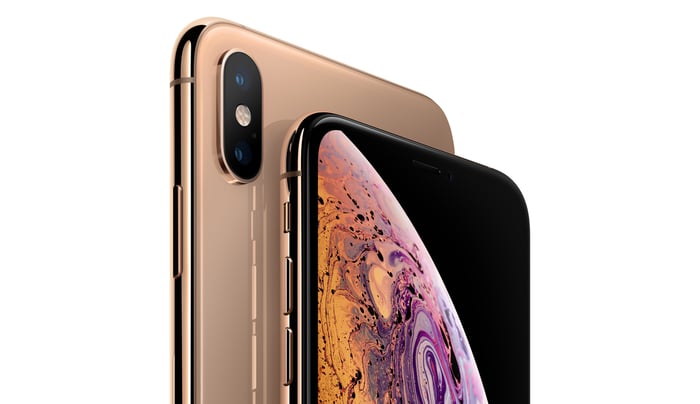Last year, Apple (AAPL -1.62%) made the then-unprecedented move of pricing the iPhone X at $1,000, inevitably sparking an ongoing debate about whether a smartphone should cost that much. CEO Tim Cook went on Good Morning America shortly after last year's unveiling in order to justify the price, arguing that most people buy phones on installment plans, spreading out the cost over time, and that smartphones have become "so essential" in people's daily lives that the devices provide more than enough value to justify the cost.
Cook returned to the talk show this morning, in part to defend iPhone pricing again.
FULL INTERVIEW: @RobinRoberts is with @tim_cook to talk about the brand new iPhone and Apple Watch--plus they love the new Memoji feature. https://t.co/0wZJnpowI9 pic.twitter.com/BpDyoANSES
— Good Morning America (@GMA) September 18, 2018
Playing defense
Pricing was the only real surprise this year, as many analysts expected Apple to reduce the flagship price in order to sell more units. Instead, Apple kept the iPhone X at the same $1,000 starting point while reaching even higher with the iPhone XS Max, which starts at $1,100. Furthermore, when you include the new 512 GB storage configuration, the most expensive iPhone now costs $1,449, up from $1,149 for a 256 GB iPhone X last year.
New iPhone price graph. (The stairway to heaven.) Use this to estimate where ASP is going. pic.twitter.com/TQUx84osM5
— Horace Dediu (@asymco) September 13, 2018
Responding to the inevitable question on pricing, Cook again pointed to installment plans where many people pay $30 per month, or "about $1 a day." Note that an installment plan for a fully loaded iPhone XS Max that has a $30 monthly payment still requires a $730 payment up front -- or about the full cost of another, less expensive iPhone. The chief executive also noted how iPhones have replaced a broad range of other product categories, from cameras to music players, among others. But that's been true for years, and that argument still applies to any modern iPhone.
The real reason why iPhone prices are going up
iPhone unit volumes have plateaued, and iPhone price increases have driven essentially all iPhone revenue growth over the past year. Additionally, phone upgrade cycles have been getting steadily longer for years, as most years' improvements are increasingly incremental. Much like what investors are seeing play out in other sectors like movie theaters and restaurants, when unit volumes are stagnant, companies often turn to price increases to compensate.

Image source: Apple.
While adopting OLED displays did come with some significant cost increases, those costs come down over time. Apple is just keeping the cost savings instead of passing them along to consumers. In other words, keeping iPhone pricing high is just one of the ways that Apple is coping with slowing upgrades while also trying to maintain margins.





